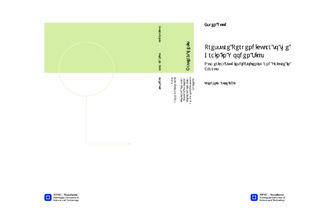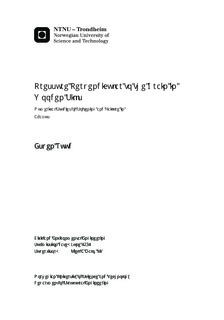| dc.contributor.advisor | Malo, Kjell A | nb_NO |
| dc.contributor.author | Ruud, Espen | nb_NO |
| dc.date.accessioned | 2014-12-19T12:01:43Z | |
| dc.date.available | 2014-12-19T12:01:43Z | |
| dc.date.created | 2012-12-03 | nb_NO |
| dc.date.issued | 2012 | nb_NO |
| dc.identifier | 573667 | nb_NO |
| dc.identifier | ntnudaim:7793 | nb_NO |
| dc.identifier.uri | http://hdl.handle.net/11250/237154 | |
| dc.description.abstract | Joints with pressure perpendicular to the grain are a common occurrence in wooden structures. While the making of such a joint is very simple, dimensioning it is difficult: The load configuration causes a mix of ductile compressive failure and brittle tensile failure. In addition, the global response shows hardening after the first failure. Recent changes to the design code has made the design bearing strength for this type of load so low that Norwegian houses no longer fulfill the requirements. As the houses remain standing even after the new rules were introduced, it is clear that a revision of the rules may be in order. The revision is made even more important by the growing interest for building large wooden structures.This thesis focuses on using numerical models to estimate the bearing strength of wooden sills with pressure perpendicular to the grain and compares the numerical model with results from laboratory tests. The goal is to see how accurate response a numerical model can give for the problem in question, to and beyond first failure.Many new and interesting tools for modeling of complex material behavior have been implemented in commercial FEA analysis software in later years. These tools are implemented in an attempt to mimic the complexity of the material behavior, but limitations in the software and hardware proved hard to overcome. While the model is able to give good estimates for bearing strength for certain cases, it proves unable to model the development after first failure.Using results from laboratory tests in conjunction with the numerical model, the impact of tested parameters such as pith location, cross-section geometry and load placement is still evaluated. Results imply that all of these parameters severely impact the global response of the problem, particularly after first fracture.The numerical model has potential, particularly as new modeling tools become available, and should be worked on. | nb_NO |
| dc.language | eng | nb_NO |
| dc.publisher | Institutt for konstruksjonsteknikk | nb_NO |
| dc.subject | ntnudaim:7793 | no_NO |
| dc.subject | MTBYGG Bygg- og miljøteknikk | no_NO |
| dc.subject | Konstruksjon | no_NO |
| dc.title | Pressure Perpendicular to the Grain in Wooden Sills: Numerical Studies of Softening and Failure in Abaqus | nb_NO |
| dc.type | Master thesis | nb_NO |
| dc.source.pagenumber | 135 | nb_NO |
| dc.contributor.department | Norges teknisk-naturvitenskapelige universitet, Fakultet for ingeniørvitenskap og teknologi, Institutt for konstruksjonsteknikk | nb_NO |

